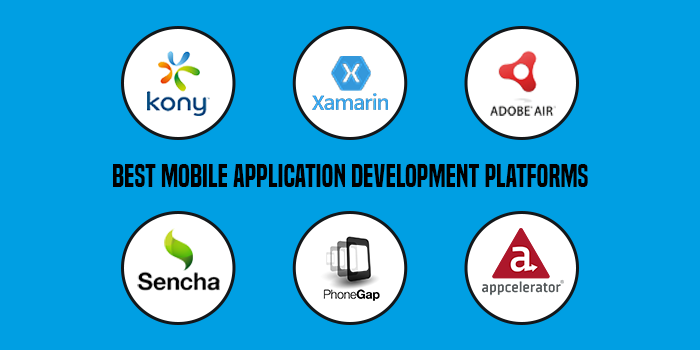
Every small, medium or large-scale enterprise today has a plan to build a mobile app. It is due to a reason for the growing demand for mobile applications in the market. Companies are willing to launch their customized apps to benefit them in their sales and revenues. Having a mobile app is becoming a constant fashion among businesses nowadays, and they are strictly following this trend of creating smartphone apps and becoming the leader in the industry.
Every product development comes with a plan and strategy. Businesses should have a proper and thorough understanding of the mobile application development lifecycle to build a dynamic and actionable application that automates their tasks and streamlines their workflow operations.
Before beginning with a strategy, we must look into some figurative statistics to have an in-depth insight. According to a reputed source, “With the increase in usage of mobile apps, the industry will expect to generate over $156 billion in consumer app industry by 2022.” Build fire reports that:
- Mobile apps are expected to generate over $935 billion in revenue by 2023.
- The Apple App Store has 1.96 million apps available for download.
- There are 2.87 million apps available for download on the Google Play Store.
- Twenty-one percent of young millennials open an app 50+ times per day.
- 49% of people open an app more than 11 times every day.
- The average smartphone owners use ten apps per day and 30 apps each month.
Above all, statistics support the need for creating a mobile application. These figures prove the existing and future worth of mobile app development and favor businesses to decide. But before taking any action, it is essential to consider the entire app development process. You should calculate the cost and budget of your business to build a niche app to fulfill your marketing goals.
Following is a step by step mobile app development process, so let’s get started now:
Take A Deep Dive Into The Market Research

When your company plans to create a smartphone app, the first question that comes to mind is about your local niche competitors. Let’s suppose your company manufactures leather goods and exports to other countries, and there will be many organizations doing the same business within your locality.
First of all, you need to find out their business strategy and examine their physical and online presence. Do they have a smartphone app? What features and functionalities do they use in their app. Conduct comprehensive research and come up with your conclusion. You should aim to excel in your competitions and dominate the industry.
Conduct An Audience Research

Customers have an incredible role in your creating a mobile app design. You should have a proper understanding of your target customers that will serve as your end-users for a smartphone application. As a new business, you need to research the audience for which you plan to build your app. You must consider numerous factors such as age, gender, demographic location, interest, income, and preference.
Businesses can utilize the google analytics tool to track their audiences and gauge their traffic sources from multiple devices and cross-browser compatibility. Customers can access your mobile app through various means such as using a smartphone, tablet, personal digital assistants, chrome, firefox, safari, opera, internet explorer, and Netscape navigation.
Utilizing The Best Mobile Application Development Platforms

Platforms are necessary for every mobile development, and without them, nobody can operate and run their app. Apple IOS and Google Android are the top leading smartphone development platforms in the world. You can have other lesser-known media choices, such as blackberry, Symbian, and Microsoft Windows OS. Android and iOS have stiff competition in the market, and they strive hard to beat each other to rule the future of the mobile app industry. Launching a tailor-made or ready-made mobile application to Google Play and Apple Store is a final step.
Customers will install and download their choice of apps and deploy them on their smartphones. Businesses should not forget to take customers’ feedback in the form of users’ reviews, recommendations, and ratings. The five-star rating indicates the app’s best performance and keeps its ranking high in the app store.
Marketing Your Mobile App With ASO

ASO stands for App store optimization that shows the ranking status of your app in the Google Play or Apple Store. Like websites, apps also rank in their app listing and reveal their appearance to customers to download and use the app.
Every app manufacturer desires to see its mobile application on the top of the ranking to bring leads and turn them into customers to achieve conversion. Conversion is a core factor that keeps your game up for traffic and drives revenue and profit from the app sales. Apps should be entertaining as well as informative to share knowledge with users and ease their tasks.
Shaping The Compelling UX/UI Design

The user interfaces design matters a lot to customers when they first install and download their mobile applications. A compelling UI/UX design engages users and offers ease of navigation. It is a process that defines the success or failure of an app. You must create smooth and seamless navigation of your app to impact the users and win their appreciation positively. You should build bigger-sized icons and add rapid features and functionalities in your app to attract the specific target audience.
Advertising Your Mobile App

Social media is a valuable tool to advertise your mobile app. It promotes your app to a wide array of audiences and gets their positive feedback in return. You need to make relevant app profile pages on different social media platforms, including Facebook, Twitter, Linked In, Pinterest, and Instagram.
Create a short-length video and YouTube and add a catchy title and description to grab customers’ attention. YouTube will generate the majority of traffic and will drive the maximum business revenue on your app marketing. It is a time-saving technique you can implement right away and take immense benefit from it in the future.
Testing Your Mobile App

Testing is a crucial phase in mobile app development that debugs errors and resolves technical issues in an app. An excellent way is to launch an alpha version of the app and share it with your customers to test an app and give their remarks. No mobile app can be built in a day. It can take time to test, run, debug, execute, develop, and deploy an app to stores. You can use split testing or multi-variant testing. The result will improve your app functionality, usability, originality, security, and durability.
Developing A New Mobile App

App development is a technical process that requires core and server-side coding for companies. It combines the front side, backside, and database programming. The front-side languages are Html, CSS, JavaScript, JQuery, JSON, AJAX, and XML. In contrast, the advanced level development includes Java, Kotlin, C-sharp dot net, objective C, C++, Perl, Swift, python, and PHP.
Adding a SQL database gives robust support to your app and shows your smartphone application’s solid and functional design. These languages can include additional frameworks such as react native, ionic, flutter, Xamarin, Angular, Apache Cordova, and Senchen. You can utilize them on native, progressive web, hybrid, and cross-browser platform mobile application development.
Conclusion
All in all, these mentioned above are user-friendly tactics to develop a mobile application in eight easy steps. Companies can build their in-house development team or better hire outsourced mobile app development services to up their game in the industry and reign their market reputation in the future years to come.
Also Read: Advantages Of Cross Mobile App Development For Your Business

